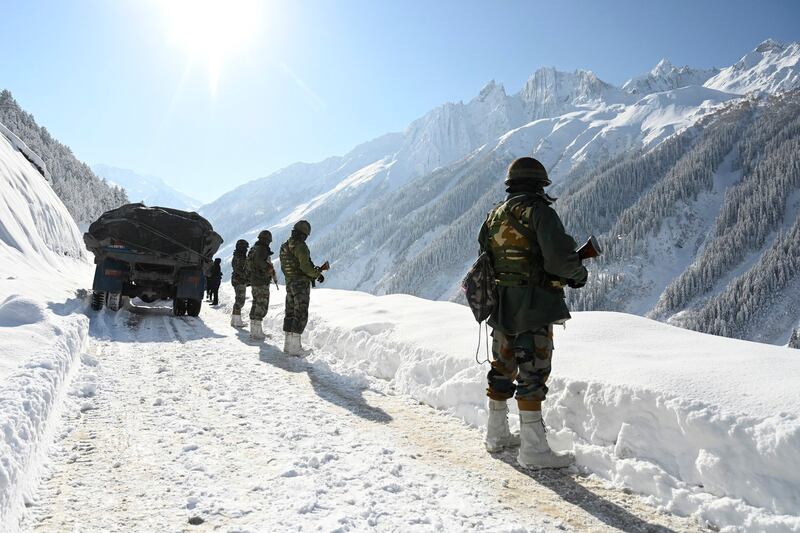When China celebrated the 100th anniversary of the founding of the Chinese Communist Party on July 1, among other achievements it highlighted was a mega-dam that the country has built in southeastern Tibet.
The latest behemoth dam to spark concern among downriver countries, the 16,000 MW Baihetan Dam, started operations three days before that day, when two of its turbines began generating electricity.
As the Indian writer and foreign policy pundit Brahma Chellaney describes it, the Chinese Communist Party (CCP) “loves a superlative.”
Writing for the website Project Syndicate, Chellaney also notes that China is the world’s largest manufacturer and exporter.
And it has more large dams than the rest of the world combined, says Chellaney, who once served as adviser to India’s National Security Council.
The dams themselves are often superlative.
The Three Gorges Dam on China’s Yangtze River is the world’s largest power station in terms of installed capacity, while the Baihetan Dam is billed as the world’s biggest arch dam as well as the world’s first project to use a giant one-gigawatt (GW) hydro-turbine generator.
With 16 such generators, Baihetan ranks as the world’s second-largest hydroelectric facility.
Baihetan, which might be described as the world's first super-dam, is located on the Yarlung Zangbo River, better known as the Brahmaputra, near Tibet's heavily militarized border with India. The river also passes through Bangladesh.

Fodder for nationalism
The Brahmaputra curves around the Himalayan mountains in a U-turn and forms the planet’s longest and deepest canyon as it plunges toward the Indian floodplains.
The new dam make great fodder for Chinese Communist Party-fueled nationalism – essential to maintain support for the world’s longest-ruling party, Chellaney says.
Also apparently not to be mentioned is the fact that giant dams can damage ecosystems, drive freshwater species to extinction, and emit more greenhouse gases than fossil-fuel power plants do.
More than 350 of China's lakes have disappeared in recent decades, with few free-flowing rivers now remaining.
In the first three decades of communist rule, given shoddy construction, about 3,200 dams had collapsed by 1981, with the 1975 Banqiao Dam failure in August 1975 alone killing tens of thousands of people.
Of course, China has raised its dam-building prowess dramatically since then, and Baihetan was completed in just four years. But as the country’s early dams age, and weather becomes increasingly extreme, catastrophic failures remain a serious risk, according to Chellaney.
Moreover, dam projects have displaced an enormous number of Chinese.
In 2007, just as China’s mega-dam-building drive was gaining momentum, then Prime Minister Wen Jiabao revealed that, since the Chinese Communist Party’s rise to power, China had relocated 22.9 million people to make way for water projects.
China’s Three Gorges Dam alone displaced more than 1.4 million people.
The new Baihetan dam has forced local residents, mostly from the relatively poor Yi nationality, to farm more marginal tracts at higher elevations.
Mounting tensions
The dam came online following mounting tension between the world’s two most populous nations and friction had affected talks on river issues.
The Wall Street Journal reported from New Delhi on July 3 that China and India have now sent tens of thousands of soldiers to their disputed border, as troop deployments in the region reach the highest level in decades.
China has increased its troop presence to at least 50,000, up from about 15,000 at this time last year, according to Indian officials.
According to The Journal, both sides have built insulated cabins and huts to keep troops stationed there through the frigid Himalayan winters.
The newspaper says that much of the buildup has occurred in eastern Ladakh, a region of India that overlaps with Kashmir and Tibet.
The deadliest confrontations between the two countries in decades occurred there in June 2020 in the Galwan Valley.
A former senior Indian official said that India has been “raising the need for coordinated approaches regarding cross-border rivers with China for several years now.”
But Shyam Saran, a former Indian foreign secretary, said “the problem is that the Chinese interrupt these exchanges whenever bilateral relations run into difficulties, as is the case now.”
Dan Southerland is RFA's founding Executive Editor.
